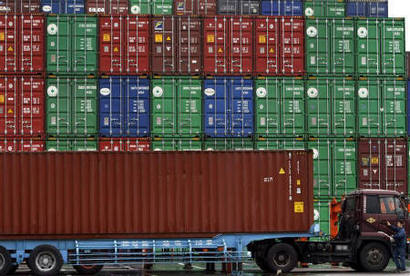Globalisation allows goods to be processed and manufactured in different geographical areas according to their comparative advantage. In most cases, trading activities are carried out by the same multinational enterprise: one enterprise imports raw materials, then exports the goods to contracting parties and subsequently has the goods imported back for labelling processes. When a product says ‘Made in China’, then, this is not the whole truth — perhaps only 30 per cent of the value-added activity was carried out in China. The WTO’s ‘Made in the World’ initiative proposes labelling products as ‘Made in the World’ instead of ‘made in a single country’ in order to capture this new reality of international trade relations.
The WTO launched the idea at the WTO Public Forum 2011, held in Geneva from 19–21 September, where it was also one of the sub-themes. Pascal Lamy, the WTO’s Director-General, came up with the catchphrase, which has since become a handy tool to explain the global trading system’s current situation.
Trade based on regional differences in competitive advantage of the value-added part of the production network has been going on for a long time. But given the complexity of the current global rules-of-origin regime, it is hard to give a fair share of recognition to countries who contribute to the manufacturing process in this way. It is hoped that the distorted trade imbalances caused by the current global value chain measurement will be readdressed through this initiative. This would benefit the many developing countries that possess relatively small manufacturing sectors. Or, in Lamy’s words, it would help achieve ‘the right statistical bridges between the different national accounting systems’.
By implementing the ‘Made in the World’ initiative, developing nations who do not have as many resources as others can easily enter the global trading stage through value-adding activities. This initiative could potentially also lower tariffs incurred by goods moving across borders several times during production. If the current trade measurement continues, it will not just provide incomplete statistics; the analysis may also be flawed, which could in turn lead to the adoption of misguided policy measures. The current method does not effectively measure competitiveness: when offshoring and outsourcing are prevalent, considering wage costs per unit gives only an approximate idea of the country’s real cost-competitiveness. Having the right tools to measure trade is essential, as the real calculation of national, regional and global trade is a fundamental tool in designing trade policy. This closely relates to domestic policy, where the government can make calls on protectionism, investment and other related matters.
Developing nations could also benefit from sectoral comparative advantages, as the value-added activities can be carried out based on sectoral origin. Each sector in a country could be maximally developed and exploited based on its comparative advantage, such that each region would not need to be self-sufficient or well established in multiple sectors. The other benefit for developing nations is the decrease in regionalisation which may occur when trade is measured in value-added terms. This new method reduces the importance of regional trade, since the alternative, vertical trade, is more frequently performed at the local level and thus reduces transportation costs.
The challenge lies in convincing WTO member states’ political leaders and trade ministers to adopt this initiative. Although implementation might not be easy, greater recognition of ‘trade in value-added’ will benefit all in the long run.
Natasha Ardiani is a Master of Public Policy student at the Crawford School of Economics and Government, the Australian National University.
Ardiani attended the WTO Public Forum 2011 in Geneva as a prize for winning the WTO Video Contest 2011.

